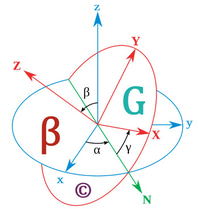FinTech and Data Centers: Powering the Future of Finance
The financial technology (FinTech) revolution is reshaping the way we manage money, make payments, and access financial services. From mobile banking and digital wallets to blockchain and robo-advisors, FinTech is driving innovation and democratizing access to financial services. But behind every FinTech application lies a critical enabler: the data center. In this blog, we’ll explore how data centers support FinTech, the challenges they face, and how they are evolving to meet the demands of this rapidly growing industry.
ELECTRICAL ENGINEERINGSUSTAINABILITYENERGY
Engr. Benjamin V. Gonzales Jr.
5/7/20253 min read
What is FinTech?
FinTech refers to the use of technology to deliver financial services in innovative and efficient ways. Key components of FinTech include:
Mobile Banking: Allowing users to manage their finances through smartphones.
Digital Payments: Enabling seamless transactions through platforms like PayPal, Venmo, and Stripe.
Blockchain and Cryptocurrency: Providing decentralized and secure methods for transferring value.
Robo-Advisors: Using algorithms to provide automated investment advice.
Peer-to-Peer Lending: Connecting borrowers and lenders directly through online platforms.
At the heart of these technologies is the data center, providing the infrastructure needed to store, process, and secure the data that fuels FinTech.
How Data Centers Enable FinTech
Data centers are the backbone of FinTech, offering the infrastructure and services needed to support innovative technologies. Here’s how they make it possible:
Data Storage and Management
FinTech applications generate massive amounts of data, from transaction records to customer information. Data centers provide the storage infrastructure needed to house this data securely and make it accessible for analysis.Real-Time Processing
Many FinTech applications, such as digital payments and trading platforms, require real-time data processing. Data centers equipped with high-performance computing (HPC) resources enable this capability.AI and Machine Learning
AI and machine learning are used to analyze financial data, detect fraud, and provide personalized recommendations. Data centers provide the computational power needed to run these advanced algorithms.Blockchain and Cryptocurrency
Blockchain technology, which underpins cryptocurrencies like Bitcoin and Ethereum, relies on data centers to store and process transaction data securely.Scalability
As FinTech adoption grows, data centers offer the scalability needed to handle increased workloads without compromising performance.Security and Compliance
FinTech applications handle sensitive financial data, making security a top priority. Data centers implement robust security measures, including encryption, firewalls, and intrusion detection systems, to protect against cyber threats and ensure compliance with regulations like GDPR and PCI DSS.
Challenges for Data Centers in Supporting FinTech
While data centers are essential for FinTech, they face several challenges:
Data Volume: The exponential growth of data generated by FinTech applications strains data center resources.
Latency: Real-time applications require low-latency connections, which can be difficult to achieve with centralized data centers.
Energy Consumption: The energy-intensive nature of FinTech technologies can lead to higher operational costs and environmental concerns.
Cybersecurity: FinTech applications are prime targets for cyberattacks, such as data breaches and ransomware.
How Data Centers Are Adapting to FinTech Demands
To address these challenges, data centers are evolving in several key ways:
Edge Computing
Edge computing brings data processing closer to end-users, reducing latency and improving performance for real-time applications like digital payments and trading platforms.AI-Driven Optimization
AI is being used to optimize data center operations, predict equipment failures, and automate routine tasks, improving efficiency and reducing downtime.Energy Efficiency
Data centers are adopting green technologies, such as renewable energy sources, energy-efficient hardware, and advanced cooling systems, to reduce their environmental impact.Enhanced Security Measures
Data centers are implementing advanced security protocols, such as zero-trust architectures and AI-driven threat detection, to protect against cyberattacks.Hybrid Cloud Solutions
Many FinTech companies are adopting hybrid cloud strategies to balance performance, cost, and flexibility. Data centers are evolving to support these environments, offering seamless integration and management.
The Future of FinTech and Data Centers
As FinTech continues to reshape the financial industry, the role of data centers will become even more critical. Here are some trends to watch:
5G Integration: The rollout of 5G networks will enhance connectivity and enable new use cases, such as real-time payments and mobile banking.
Decentralized Finance (DeFi): The rise of blockchain-based financial services will drive demand for secure and scalable data center infrastructure.
AI-Driven Innovation: AI will play a larger role in driving FinTech, from automating processes to enabling predictive analytics.
Sustainability: Data centers will continue to focus on reducing their carbon footprint through innovative technologies and practices.
Conclusion
FinTech is revolutionizing the way we manage money, make payments, and access financial services, driving innovation and inclusivity. But none of this would be possible without the critical infrastructure provided by data centers. From enabling real-time transactions and AI-driven insights to ensuring security and scalability, data centers are the engine of innovation in the FinTech revolution.
As FinTech continues to evolve, data centers will remain at the heart of this transformation, ensuring that businesses and consumers can harness the power of technology to drive growth and success.





